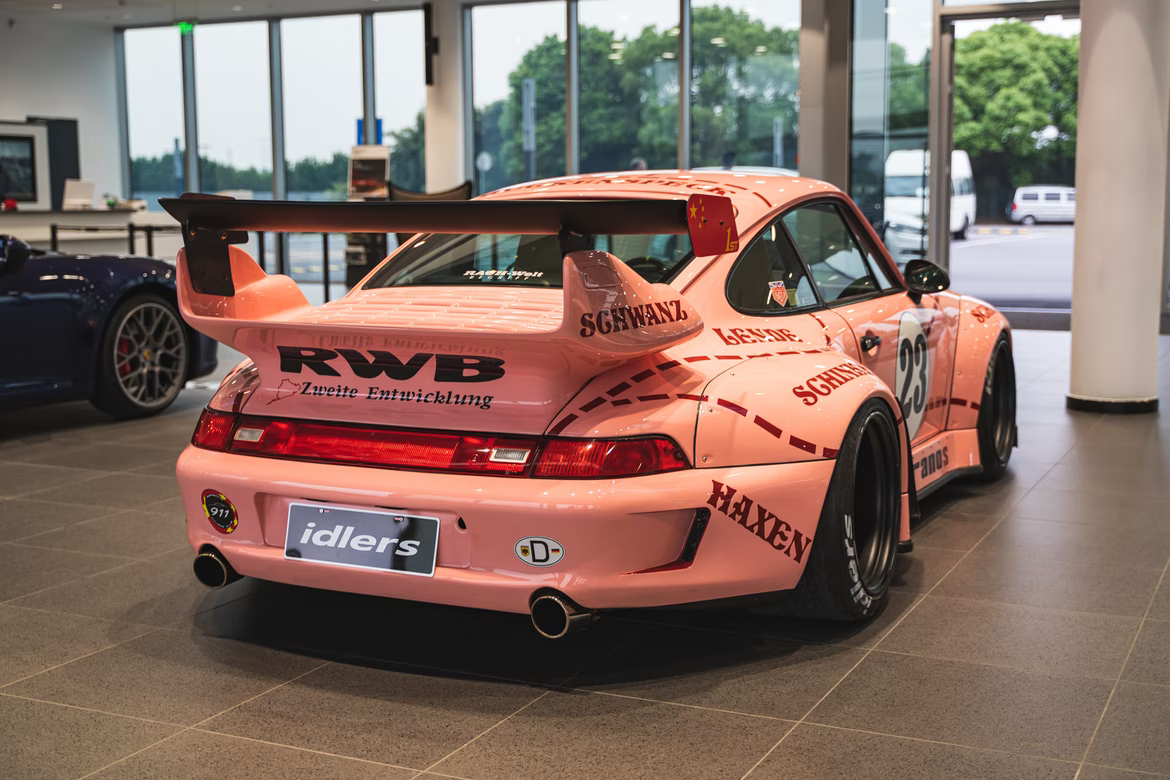The car I chose combines the German automotive industry elements and Japanese design ideas. It is the RWB Porsche 911, which is an author’s variation of the famous German sports car, equipped with additional unique elements. The history of these cars is closely linked to the creator of RWB, which stands for RAUH-Welt BEGRIFF or “Rough World Concept.” Throughout the 1990s, a Japanese man named Akira Nakai was becoming increasingly important in the world of automobiles through his participation in the crew named Rough World. He also studied cars by working at a local auto repair shop, making it possible for Nakai to interact with many Porsche 911s. The combination of all these factors led the man to buy a defaced Porsche 930 and restore it in accordance with his liking. This restoration resulted in creating what is now known as an RWB Porsche. Although the exact date of the creation of this car is unknown, it can be assumed that the history of the RWB began in the 1990s.
All RWB Porsches are unique, and there are no two models that would be exactly the same; however, there is still a common recipe in the vehicle design. It involves explicitly remarkable changes to a car’s body – and almost always, the increasing of the width (Cassell). In addition, the company offers a plethora of additional options for those who have a desire to be different from the crowd. This could include anything, from small parts such as adding canards and rivets to bumpers and fenders to modifying and installing particular suspensions. Because of this, baseline cost data can only be considered in terms of the basic tuning packages offered. According to the official website of RWB, their cost starts from $24,000 and can increase depending on the client’s wishes (RAUH-Welt BEGRIFF). As a result, when all these changes are made, customers receive a brand-new car.
I chose this particular car for my project because its design is truly unique, and it is the due to Nakai’s peculiar style as a craftsman. By employing the skills he learned as a street racer in his youth and mixing them with a classic Porsche 911’s lines and architecture, he managed to create an utterly fascinating piece of design (Parry). RWB’s window branding and wide riveted fenders are their vehicle’s most distinctive features, apart from the line element (Commander). From my point of view, these cars are the perfect combination of factory design with personal modifications that take into account the original intent.
The purpose of this design comes from Nakai’s passion for racing and the art that results in the final look. However, the main focus is on the appearance of the final product. While the widened wheel arches and fitted body kits serve as additional aerodynamic elements to increase the car’s performance, the ultimate goal revolves around its image. The ability to achieve higher speeds and reduced comfort in favor of a sporty aesthetic are just by-products of design. The RWB’s look makes heavy use of a line element that expands on the original factory outline, making it more distinctive and aggressive. It defines the car’s shape and helps it maintain the classic look while its details are adjusted to fit the image of a more modern vehicle. This is the most critical design element in this context, thanks to which RWB Porsches acquire their characteristic uniqueness, and no element is better featured in this design. However, this focus on individuality also means that Nakai does not consider the vehicle’s functionality or any environmental needs. His cars are simply so-called ‘eye-candies’ that their owners enjoy driving.

Works Cited
Cassell, Austin. “Here’s Everything You Should Know About Rauh Welt Begriff.” HotCars, Web.
Commander. “What is a Porsche 911 RWB?” Air Brigade, 2020, Web.
Massa, Ye. “RWB Porsche.” Unsplash. 2019, Web.
Parry, Tommy. “A History of Rauh-Welt’s Widebody Porsches.” Flatsixes, Web.
RWB/RAUH-Welt BEGRIFF is a Porsche tuner located in Japan. RAUH-Welt BEGRIFF, Web.